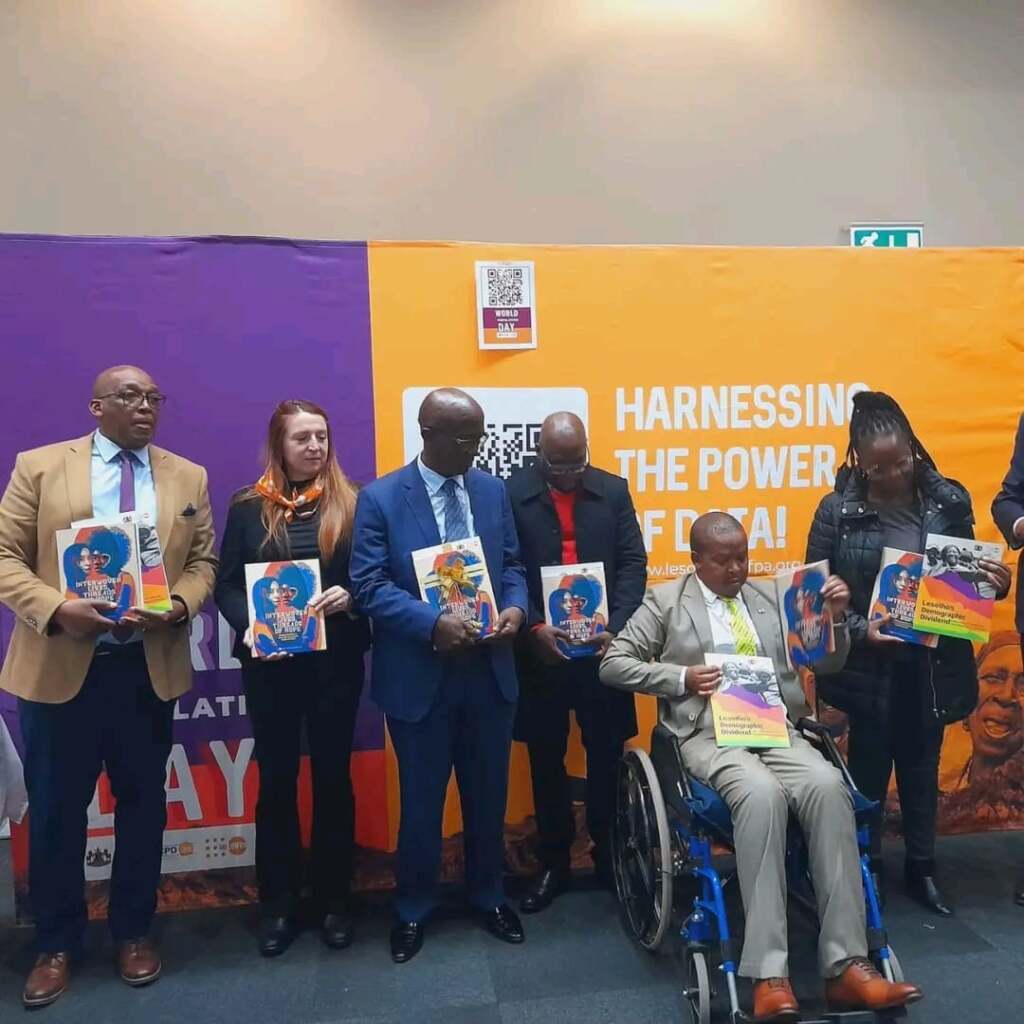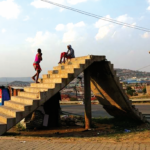Ntsoaki Motaung
Lesotho’s overall poverty rates have improved between 2002/2003 and 2017/2018, according to the UNFPA’s report, Lesotho’s Demographic Dividend in the Context of Health and Other Development Challenges, published yesterday.
Using the national poverty line (the upper-bound consumption-based threshold of M648.88 per adult equivalent per month), the poverty rate fell from 56.6 percent nationally to 49.7 percent over the period, a decline of 6.9 percentage points.
The decline was even sharper for extreme poverty, which fell ten percentage points from 34.1 percent to 24.1 percent between 2002/2003 and 2017/2018.
“Declining poverty rates were observed for both urban and rural areas across both poverty line, although the decline in poverty in rural areas in terms of the national poverty line was tiny (a 0.6 percentage point decline to 60.7 percent),” the report read.
“In terms of the national poverty line, the decline in the urban poverty rate was approximately 13 percentage points from 41.5 percent to 28.5 percent,” it added.
Extreme poverty rates—the proportion of people living below the food poverty line of M352.39 per adult equivalent per month—declined strongly in both urban (-11.0 percentage points to 11.2 percent in 2017/2018) and rural areas (-6.9 percentage points to 30.8 percent in 2017/2018).
“The Lesotho Bureau of Statistics (2019e) also reported improvements in the poverty gap (depth of poverty, or distance separating the poor from poverty) and the squared poverty gap (a poverty measure that attaches greater weight to those furthest below the poverty line) nationally, and in both urban and rural areas, in terms of both poverty lines,” the report further read.
“Using the national poverty line, the poverty gap decreased by 8.3 percentage points in urban areas (from 19.2 percent to 10.8 percent), and by 4.3 percentage points in rural areas (32.0 percent to 27.7 percent) between 2002/2003 and 2017/2018,” it added.
Nationally, the reduction was 7.1 percentage points (29.0 percent to 21.9 percent).
Roughly four out of five poor people in Lesotho reside in rural areas, with the proportion rising to 84.1 percent when considering extreme poverty.
The report was unveiled yesterday during the commemoration of World Population Day in Maseru under the theme; Embracing the Power of Inclusive Data Towards a Resilient and Equitable Future for All.
Speaking at the commemoration, Principal Secretary (PS) of the Ministry of Finance and Development Planning, Nthoateng Lebona, indicated that World Population Day was first observed in 1989 and aims to raise awareness on various population issues such as the importance of family planning, gender equality, poverty, maternal health, and human rights.
Lebona said: “This year’s theme seeks to bring inclusivity in population issues and we have to make sure that no one is left behind, especially the marginalised communities.”
She indicated that this comes in an opportune time as it coin dentally with the commemoration of 200 years as the Basotho Nation.
“So we need to reflect where we are coming from and where we are going as a nation and as a population while ensuring that no one is left behind,” she said.
She said accurate data is central to proper planning and efficient use of resources and allows greater coverage of initiatives.
UNFPA Representative, Innocent Modisaotsile the theme underscored the importance of reliable and inclusive data.
“It offers us as the country and policymakers, the chance to celebrate achievements but also to ask ourselves critical questions like whether the data collection is safe for all the people. We also need to ask ourselves whether the data covers everyone or addresses issues of inclusivity,” Modisaotsile said.
He indicated that the Lesotho Demographic Dividend Study Report is a comprehensive study that analyses Lesotho’s demographic trends and their implications for the country’s economic growth and development.
“It provides insights into how strategic investments in health, education, and employment can unlock the demographic dividend, promoting prosperity and well-being for the nation,” he said.
The report also revealed that inequality, as measured by the Gini coefficient, has also declined over the period.
The Gini coefficient is a commonly used measure of inequality, which ranges between zero and 100, indicating perfect equality and perfect inequality respectively.
At the national level, according to the report, the Gini coefficient fell from 51.9 to 44.6 between 2002/2003 and 2017/2018.
Even stronger declines were observed within urban areas (-10.2 points to 41.5) and within rural areas (-8.8 points to 41.7).
“Access to basic services, education, and health facilities is an essential part of human capital formation and should be prioritised to continue improving the poverty measures of Lesotho,” read the report.
It stated that poverty is found to be associated with distance to educational and health facilities, with poverty rates substantially higher in areas that are distant from primary schools, secondary schools, and health facilities.
“The data indicates that, of all individuals residing more than five kilometres from a primary school, nearly two-thirds (63.3 per cent) were poor. However, this group constitutes a very small proportion of the population (7.1 percent) and therefore of the poor (9.1 percent).
“Poverty rates are also more than 20 percentage points higher amongst the populations that live more than five kilometres from a secondary school or from a health facility.
“As a result, while only one-third of Lesotho’s population lives more than five kilometres from a secondary school, they constitute 43.1 per cent of the poor because of their 64.4 per cent poverty rate (compared to 42.3 per cent for those living within five kilometres from a secondary school).”
The report makes several recommendations.
The first recommendation is that the government should continue to work towards ensuring that the demand for family planning is met.
The second recommendation is that investments in providing access to high-quality education underpin the ability of young people to access good quality jobs within the labour market, ensuring that Lesotho is able to maximise the remaining demographic dividend.
“Investments in quality education are critical to ensuring that young people are equipped with the kinds of skills that are valued by employers in the labour market,” read the report.
It added: “Better educated workers are typically more likely to be able to find employment, and, when employed, are more likely to have higher earnings. In both instances, this would serve to raise per capita labour incomes.”
The third recommendation is that continued investments in health and, in particular, sustained funding for the prevention and treatment of HIV/AIDS are critical to ensure that the demographic dividend is not substantially eroded by illness and death.
The fourth recommendation is that efforts aimed at closing any education backlogs are critical in moderating the long-term impacts of the COVID-19 pandemic and ensuring that those generations currently in the education system do not bear a disproportionate cost.
The fifth recommendation is that the government should implement a policy that effectively addresses both high unemployment rates amongst young people and gender gaps in labour income.
Economic policy, according to the report, is an important focus area given that the demographic dividend is very much an economic outcome.
“While countries may invest extensively in developing the human capital of their populations, unless these people are able to deploy that human capital in the labour market, the dividend will be curtailed.
“Thus, policymakers should work to ensure macroeconomic stability, competitive markets, and economic dynamism. Labour market policy and regulation are key in creating a dynamic labour market that is able to absorb new job seekers, while also ensuring balance between the interests of the employed and employers, while also considering the needs of the unemployed and those in precarious employment.”
Summary
- “Declining poverty rates were observed for both urban and rural areas across both poverty line, although the decline in poverty in rural areas in terms of the national poverty line was tiny (a 0.
- “The Lesotho Bureau of Statistics (2019e) also reported improvements in the poverty gap (depth of poverty, or distance separating the poor from poverty) and the squared poverty gap (a poverty measure that attaches greater weight to those furthest below the poverty line) nationally, and in both urban and rural areas, in terms of both poverty lines,” the report further read.
- Speaking at the commemoration, Principal Secretary (PS) of the Ministry of Finance and Development Planning, Nthoateng Lebona, indicated that World Population Day was first observed in 1989 and aims to raise awareness on various population issues such as the importance of family planning, gender equality, poverty, maternal health, and human rights.

Your Trusted Source for News and Insights in Lesotho!
At Newsday Media, we are passionate about delivering accurate, timely, and engaging news and multimedia content to our diverse audience. Founded with the vision of revolutionizing the media landscape in Lesotho, we have grown into a leading hybrid media company that blends traditional journalism with innovative digital platforms.





